The enthralling tale of Kuala Lumpur’s evolution is akin to a tapestry woven with threads of determination, diversity, and dynamic growth. Once a mere jungle backwater, this city, nestled amid the confluence of the Klang and Gombak rivers, has metamorphosed into a bustling metropolitan hub. The city’s story is intricately tied to its past as a tin mining town, a colonial bastion, and a melting pot of cultures. Discover the indelible milestones and landmarks that moulded Kuala Lumpur, rendering it not just the capital of Malaysia, but a symbol of Southeast Asian resilience and innovation.
The Birth of Kuala Lumpur: From Jungle to Settlement
In the early 19th century, the dense jungles where Kuala Lumpur now stands were unexplored territories. It wasn’t until the 1850s that Chinese immigrants, driven by the burgeoning demand for tin, embarked on a journey that would leave an indelible mark on this land. Their arrival at the muddy confluence—from which Kuala Lumpur derives its name—heralded the start of an era characterized by enterprise and exploration.
The miners were initially drawn to the area by the potential of tin discoveries in Ampang. This location, now a bustling suburb, marked the humble beginnings of what would become a global city. Despite the perilous conditions, including the deadly scourge of malaria, the site evolved into a vibrant settlement as the tin industry flourished.
- 💡 Key Fact: By the late 19th century, Kuala Lumpur had emerged as a vital commercial hub in Selangor.
- 📍 The indigenous name reflects its origins: Kuala Lumpur means “muddy confluence” in Malay.
This period saw the transformation of these early settlements into thriving communities. Paths were carved through the jungle, laying down the foundational infrastructure that would support the town’s growth. Entrepreneurs, traders, and laborers contributed not only to the burgeoning tin industry but also to a blend of cultures that would define KL’s identity.
Moreover, the introduction of the role of ‘Kapitan’, or the Chinese headman, illustrated efforts to maintain order amidst the community’s rapid expansion. Yap Ah Loy, one of the most notable kapitans, played a pivotal role in rebuilding the town after it faced a devastating fire in 1881, steering resources toward more resilient construction methods involving brick and tile.
From these beginnings emerged a township characterized by a unique blend of customs and traditions, providing a canvas on which future prosperity would be painted. The tenacity of its early settlers, facing harsh conditions, is still reflected in the city’s energetic pulse today. This transformation from a jungle outpost into a significant trading town set the stage for Kuala Lumpur’s broader historical trajectory.

Kuala Lumpur Under British Influence: Growth and Governance
The late 19th century ushered in an era of British colonial governance, which had a profound impact on Kuala Lumpur’s urban and economic landscape. British intervention was pivotal in transforming KL from a burgeoning tin-mining frontier into the glittering seat of administration of the Federated Malay States by 1895. This shift not only catalyzed urban development but also intensified the cultural melting pot that defines Kuala Lumpur today.
A key milestone in this transformation was the relocation of the British Resident’s office from Klang to KL in 1880. This move underscored the city’s growing importance as a strategic administrative hub. British influences became apparent with the introduction of structured urban planning and public services, leading to the establishment of roads, railways, and government buildings.
- 🏛️ Historic Milestone: The construction of the Sultan Abdul Samad Building in 1897—the architecture reflects the Indo-Saracenic style, blending Moorish, Mughal, and Western designs.
- 🚂 Rail development in 1886 facilitated tin trade, reducing travel time and incorporating Kuala Lumpur into a broader trade network.
The late 19th and early 20th centuries also witnessed the rise of modern amenities that improved living standards: piped water, electricity, and telegraph systems began to weave into the urban fabric. Schools and places of worship, such as the Sin Sze Si Ya Temple and Masjid Jamek, underscored the melting pot of ethnicities and religions establishing roots in KL.
The establishment of Kuala Lumpur as a state capital anchored it as a focal point for trade, governance, and culture. The city’s administrative role attracted migrants from across Malaya and beyond, further enriching its cultural tapestry. Yet, colonial rule also introduced challenges. The hierarchical governance systems and economic disparities laid the groundwork for social tensions, some of which resonate even today.
Colonial rule inevitably laid the cornerstones for Kuala Lumpur’s rapid modernization and socio-economic diversity. While the imprints of British architecture and urban planning remain visible, the city’s growth was equally shaped by the anarchy and adaptability of its settler populace who blended diverse customs into a thriving urban tapestry.
The Challenges and Resilience of Kuala Lumpur During War
World War II was a tumultuous period that threatened Kuala Lumpur’s burgeoning prosperity. From 1942 to 1945, the city was under Japanese occupation, a significant chapter that disrupted the socio-economic fabric. This occupation brought hardship and constrained freedom, impacting all communities residing in the city.
During this period, numerous challenges arose, including scarce resources, curfews, and civil unrest. However, the resilience of Kuala Lumpur’s citizens was remarkable. Communities banded together to endure the hardships, creating a synergy that would become a defining characteristic of the city’s spirit.
- ⛓️ Occupation Period: Harsh governance and resource control under Japanese rule lasted from 1942-1945.
- 🙏 Community resilience was pivotal in survival and eventual recovery post-occupation.
Post-war, Kuala Lumpur witnessed a surge in nationalistic sentiment as the city and the country aspired toward independence. The British re-establishment post-Japanese occupation did not quell the fervor for self-governance, eventually leading to Malaysia’s declaration of independence in 1957. Kuala Lumpur hosted the historic event, marking a significant turning point as it moved away from colonial subjugation toward self-determination.
This period illustrated the dynamic resilience embedded in Kuala Lumpur’s populace. Despite the adversities faced during the war and subsequent occupancies, the city rallied to rebuild. These efforts laid a robust foundation for its successive prosperity and modernization. The scars of war impelled Kuala Lumpur to evolve with a renewed commitment towards unity and collective progress, setting the pace for its future transformation.
Legacy structures like Merdeka Square, where the independence declaration was made, serve as poignant reminders of the city’s trials and triumphs. Each historical milestone is embedded in the current progress of the city, illustrating a journey of transformation that few cities have undergone.
Modern Transformation: A City of Towers
The latter half of the 20th century marked Kuala Lumpur’s transformation from a recovering post-war city to a modern metropolis. The 1970s and 1980s were characterized by rapid urbanization that saw the skyline adorned with towering skyscrapers, with the iconic Petronas Towers heralding Kuala Lumpur’s emergence as a global city.
Visionary leaders like Dr. Mahathir Mohamad catalyzed this explosive growth phase. His Vision 2020 initiative charted Malaysia’s trajectory towards becoming a developed nation, with Kuala Lumpur at its heart. Infrastructure improvements, foreign investments, and technological advances laid the cornerstone for KL’s economic development.
- 🏙️ The Petronas Towers project, completed in 1996, became a symbol of modernization, boosting global recognition.
- ⚙️ Economic diversification extended beyond mining into finance, technology, and tourism.
Concurrently, Kuala Lumpur enhanced its role as a cultural hub, with revitalized spaces like the Kuala Lumpur Heritage and modern galleries, enabling arts and cultural integration amid technological advancements. Despite this swift rise, maintaining a balance between heritage conservation and futuristic development remains crucial.
Kuala Lumpur’s evolution into a contemporary city also witnessed the enhancement of transport networks, exemplified by the development of Kuala Lumpur International Airport (KLIA) and extensive urban rail systems, which have streamlined international and domestic connectivity.
The city now stands tall as a cosmopolitan giant, with landmarks like the Sultan Abdul Samad Building and Batu Caves reflecting its rich history amidst modernity. The city’s skyline is more than a collection of structures; it’s a testament to resilience, diversity, and forward-drive, continuing to resonate with inspiration for both residents and visitors alike.
Kuala Lumpur in 2025: A Future-Oriented Metropolis
Fast forward to 2025, Kuala Lumpur stands as a beacon of progress, integrating its rich past with visionary aspirations. Now a bustling global city, it continues to draw visitors from around the globe, offering a unique intersection of tradition, innovation, and dynamic urban life.
In recent years, urban revitalization efforts have concentrated on the greening of the city landscape, exemplified by developments like the Bukit Nanas Forest Reserve and the River of Life project. Such endeavors have rejuvenated urban spaces, improving citizens’ quality of life and promoting sustainable practices.
- 🌍 Sustainability: Integrated green spaces and smart technology redefine KL’s urban efficiency.
- 💼 Tourism flourishes as Kuala Lumpur emerges as a coveted destination for heritage and culinary explorations.
Kuala Lumpur’s transport infrastructure remains a priority, enabling seamless experiences for globetrotters and local commuters alike. Cutting-edge projects such as the implementation of smart rail and road systems have positioned KL as a model city for technological integration.
While innovation continues to define its trajectory, Kuala Lumpur proudly celebrates its historical landmarks. Museums such as the National Museum of Malaysia, Islamic Arts Museum Malaysia, and cultural districts remain vital in promoting understanding and appreciation of its colorful heritage.
The narrative of Kuala Lumpur is a story of progress – from a small tin settlement to a vibrant cityscape of tomorrow. Each phase of its history interspersed with stories of tenacity, cultural harmony, and visionary design, cements its standing as a city designed not just for the present, but with eyes firmly set on the endless possibilities of the future.
FAQ: Understanding Kuala Lumpur’s Rich Heritage
- 👥 How did Kuala Lumpur get its name?
Kuala Lumpur translates to “muddy confluence” in Malay, reflecting its establishment at the junction of the Gombak and Klang rivers.
- 🌆 What are some must-visit historical landmarks in KL?
Treasured sites include the Sultan Abdul Samad Building, Merdeka Square, and the Batu Caves.
- 📜 How did World War II affect Kuala Lumpur?
Japanese occupation during the war led to resource scarcity and hardships, eventually spurring a strong push toward Malaysian independence post-war.
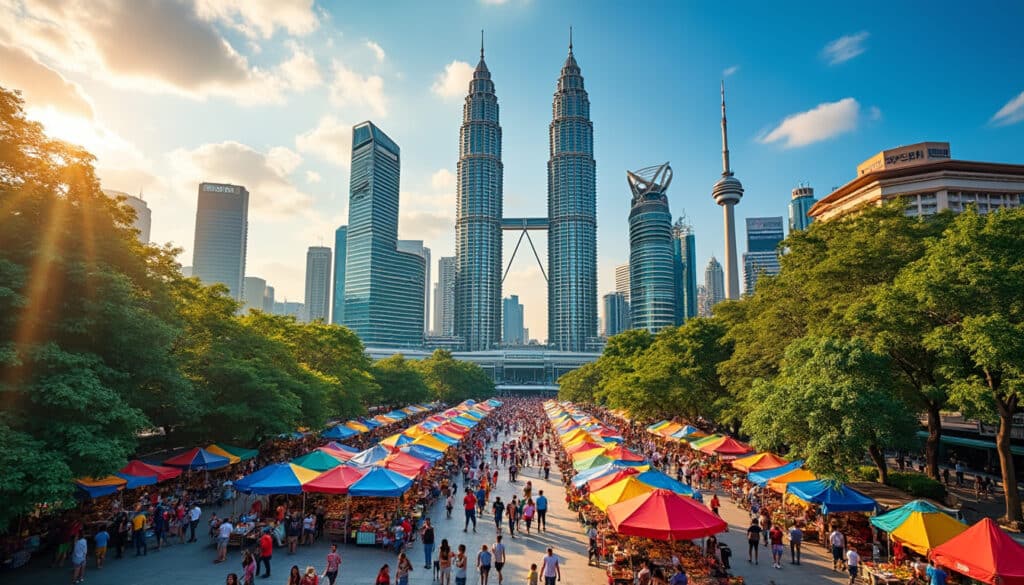
Fun Facts & Curiosities About Kuala Lumpur
Welcome to the multifaceted world of Kuala Lumpur, a city that captivates with its vibrant cultural tapestry and awe-inspiring landmarks. Known for the towering Petronas Twin Towers and its bustling street food scene, Kuala Lumpur stands as a testament to…

Architecture and urban features of Kuala Lumpur
Kuala Lumpur, a vibrant metropolis, stands as a testament to the harmonious blend of history, culture, and modernity. The cityscape is elegantly punctuated by towering skyscrapers, each reflecting the diverse tapestry of influences that have shaped the city’s architectural marvels.…
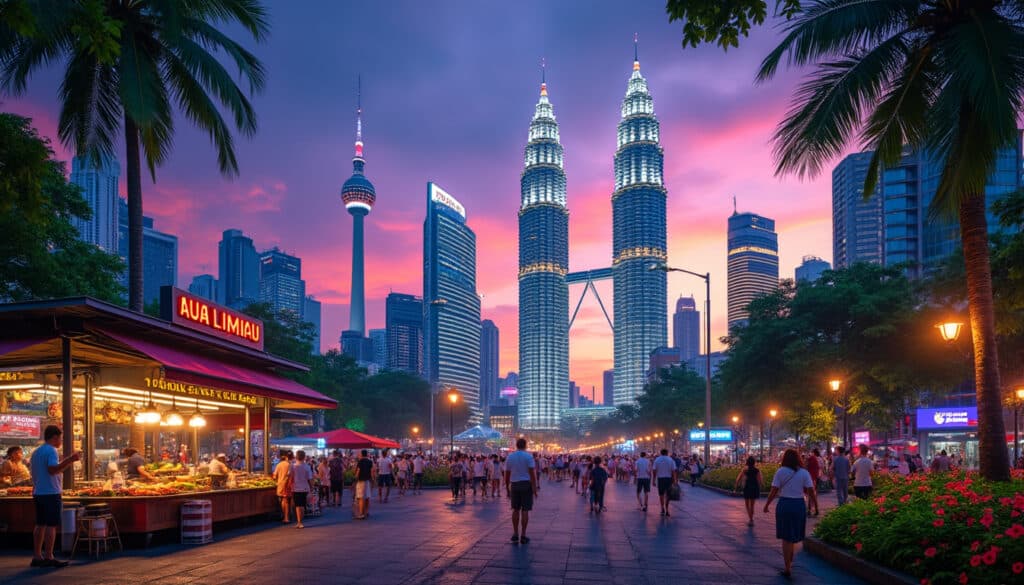
Basic facts about Kuala Lumpur
Kuala Lumpur, a vibrant metropolis and the capital city of Malaysia, is not just a hub of culture and commerce but a melting pot of tradition and modernity. With towering skyscrapers like the Petronas Twin Towers and the historical Batu…
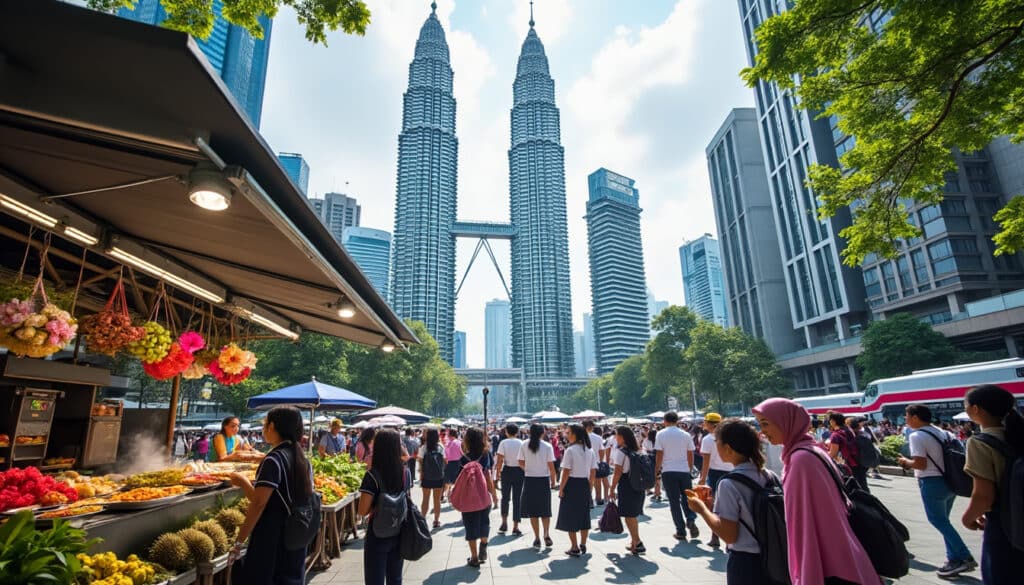
For those considering a move to vibrant Southeast Asia, Kuala Lumpur, affectionately known as “KL,” presents itself as a captivating blend of modernity and tradition. As the heart of Malaysia, this bustling metropolis offers an enticing mix of cultural diversity,…
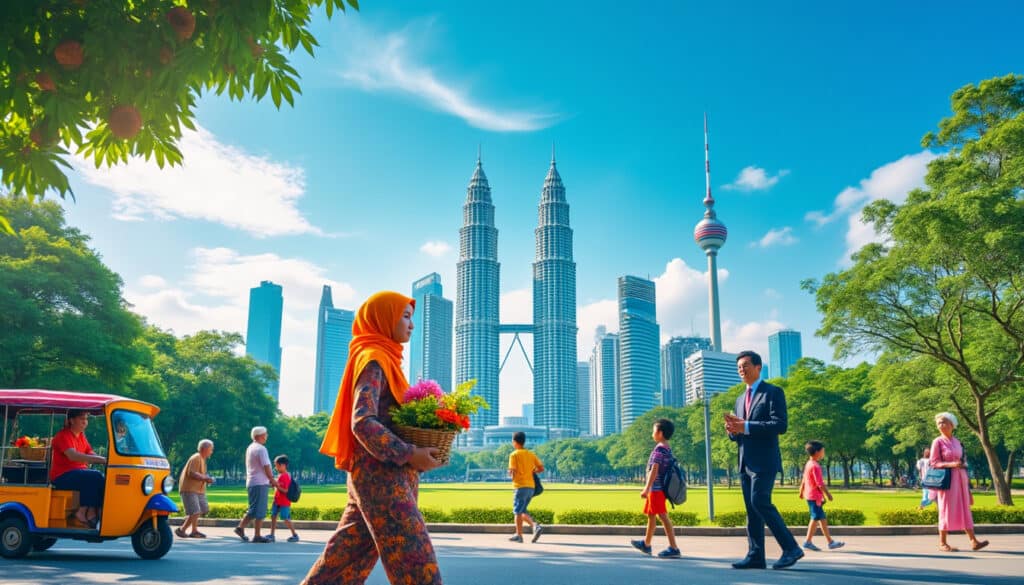
Demographics and geography of Kuala Lumpur
The demographics and geography of Kuala Lumpur present a vivid tapestry of cultures and landscapes, shaping this vibrant capital city of Malaysia. Renowned for its cultural diversity, Kuala Lumpur, or simply “KL”, stands as a beacon of Malaysia’s rich history…
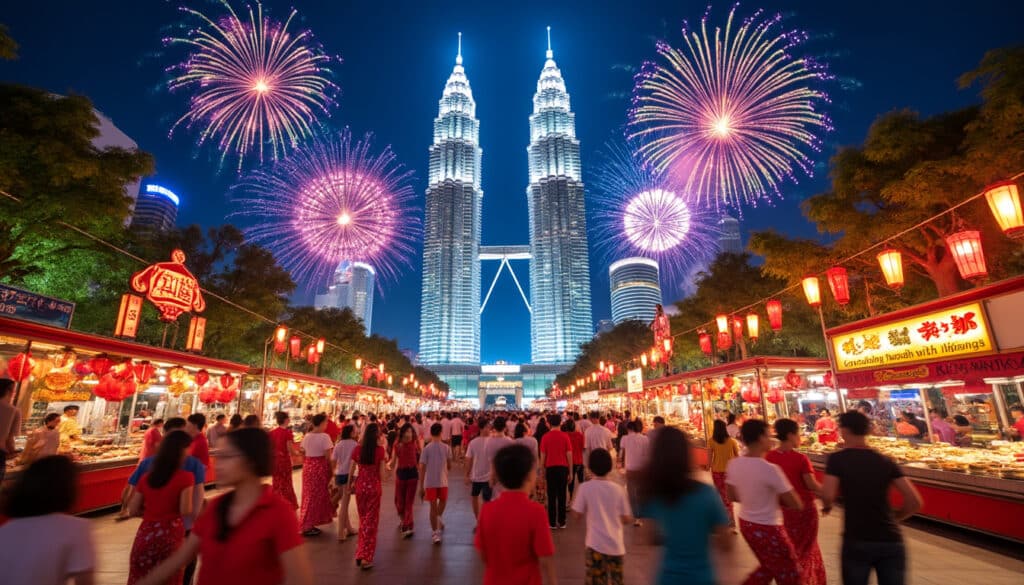
Holidays and celebrations in Kuala Lumpur
Kuala Lumpur is a city renowned for its vibrant celebrations and rich cultural tapestry. As the heartbeat of Malaysia, it hosts a plethora of holidays and festivities that attract both locals and visitors alike. With its diverse blend of Malay,…

Language and spelling of Kuala Lumpur
Dive into the bustling streets of Kuala Lumpur, and you’re engulfed in a symphony of languages reflecting the city’s rich multicultural tapestry. From the austere Bahasa Melayu to the vibrant chimes of Mandarin, each language contributes distinctively to the fabric…
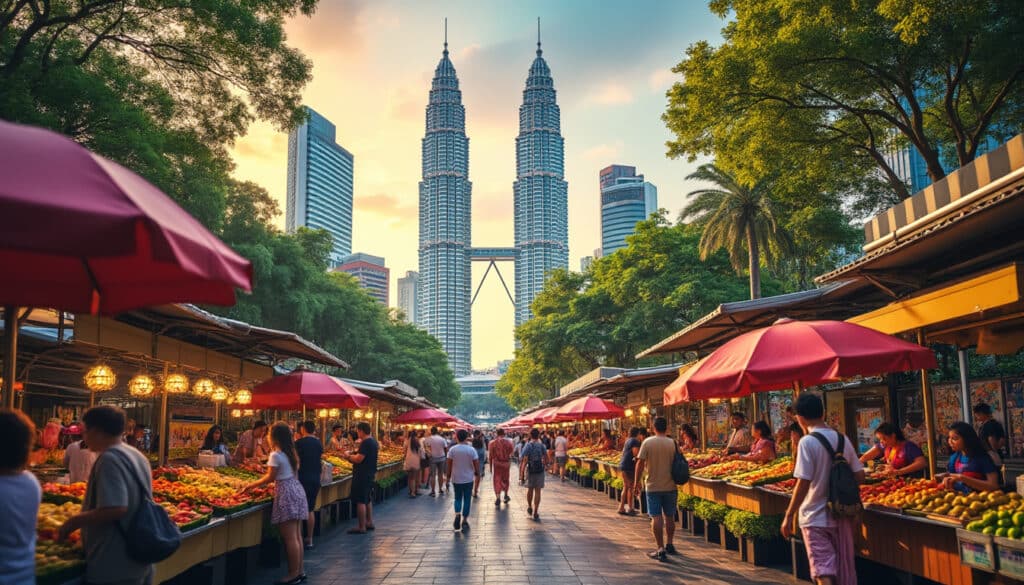
Local tips for tourists in Kuala Lumpur
Visiting Kuala Lumpur offers a unique blend of cultural diversity, vibrant city life, and historical richness. Whether exploring bustling markets, savoring local delicacies, or marveling at impressive landmarks, visitors will find an abundance of experiences. Embrace the city’s warmth and…
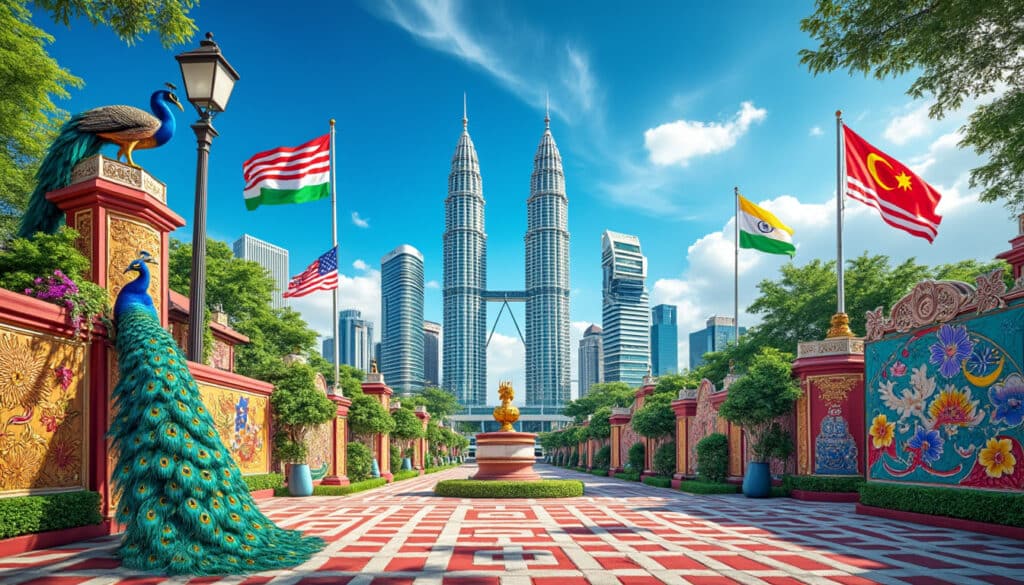
Names, flags, and identity of Kuala Lumpur
The vibrant city of Kuala Lumpur is a melting pot of cultural nuances, intricate flags, and a rich tapestry of identities that reflects its journey from a small tin-mining settlement to a bustling metropolis. As you walk through its streets,…
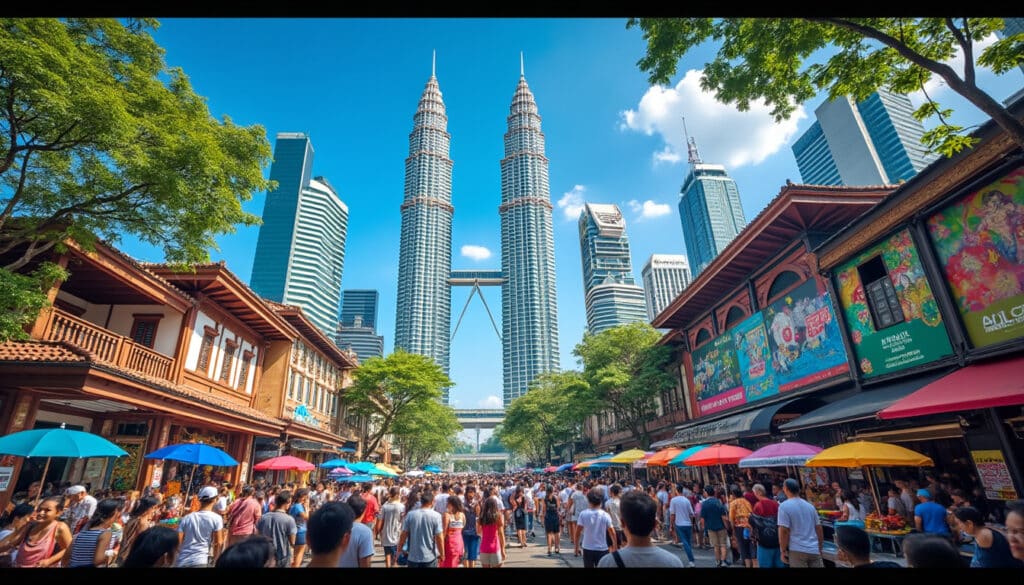
Reputation and identity of Kuala Lumpur
Kuala Lumpur, the bustling capital of Malaysia, is renowned for its unique blend of tradition and modernity. Often abbreviated as KL, this vibrant city stands as a testament to Malaysia’s rich cultural heritage and continuous urban development. From its iconic…

Time and time zone in Kuala Lumpur
Kuala Lumpur, Malaysia’s bustling capital, is not just a hub of vibrant culture and bustling street life; it is also a city intricately connected to its time zone, Maritime Time (MYT). Nestled in the GMT+8 zone, Kuala Lumpur lives by…
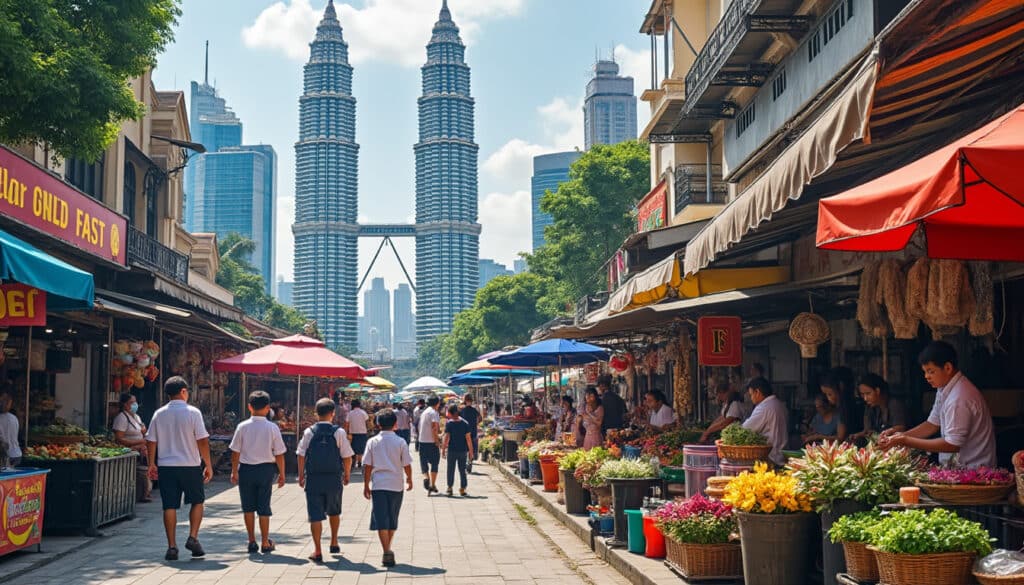
Unusual facts and social issues in Kuala Lumpur
Nestled in the heart of Malaysia, Kuala Lumpur is a city of contrasts, where the ancient mingles with the ultra-modern and diverse cultures blend seamlessly. Known for its iconic Petronas Twin Towers, bustling street markets, and vibrant nightlife, the city…
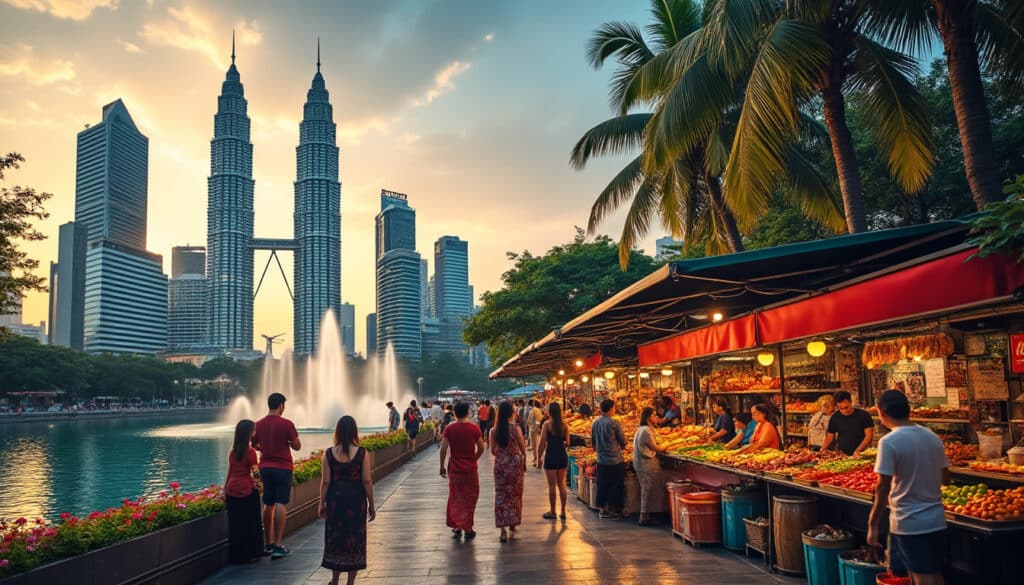
What does Kuala Lumpur look, smell, feel like?
Nestled between the hustle of thriving city life and the whispers of heritage that sing through its landmarks, Kuala Lumpur is a sensory tapestry that invites exploration. Whether you’re wandering through hidden alleyways or soaking in the skyline from afar,…

